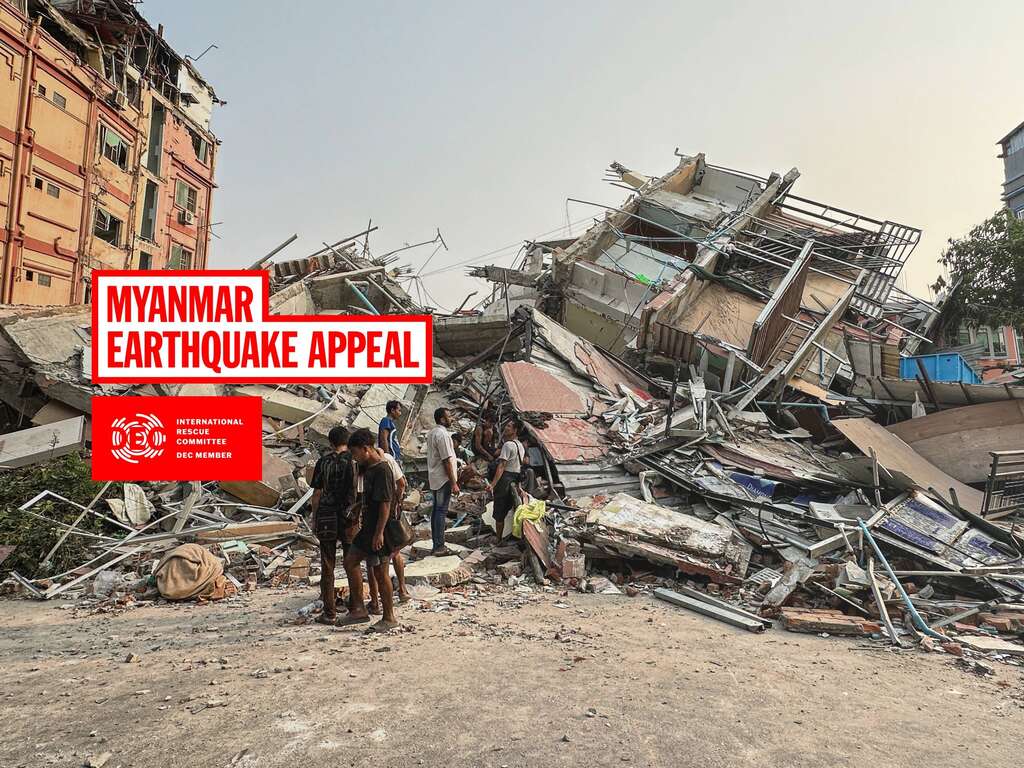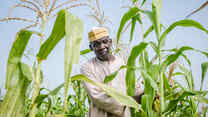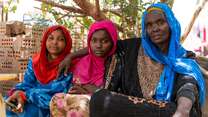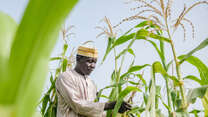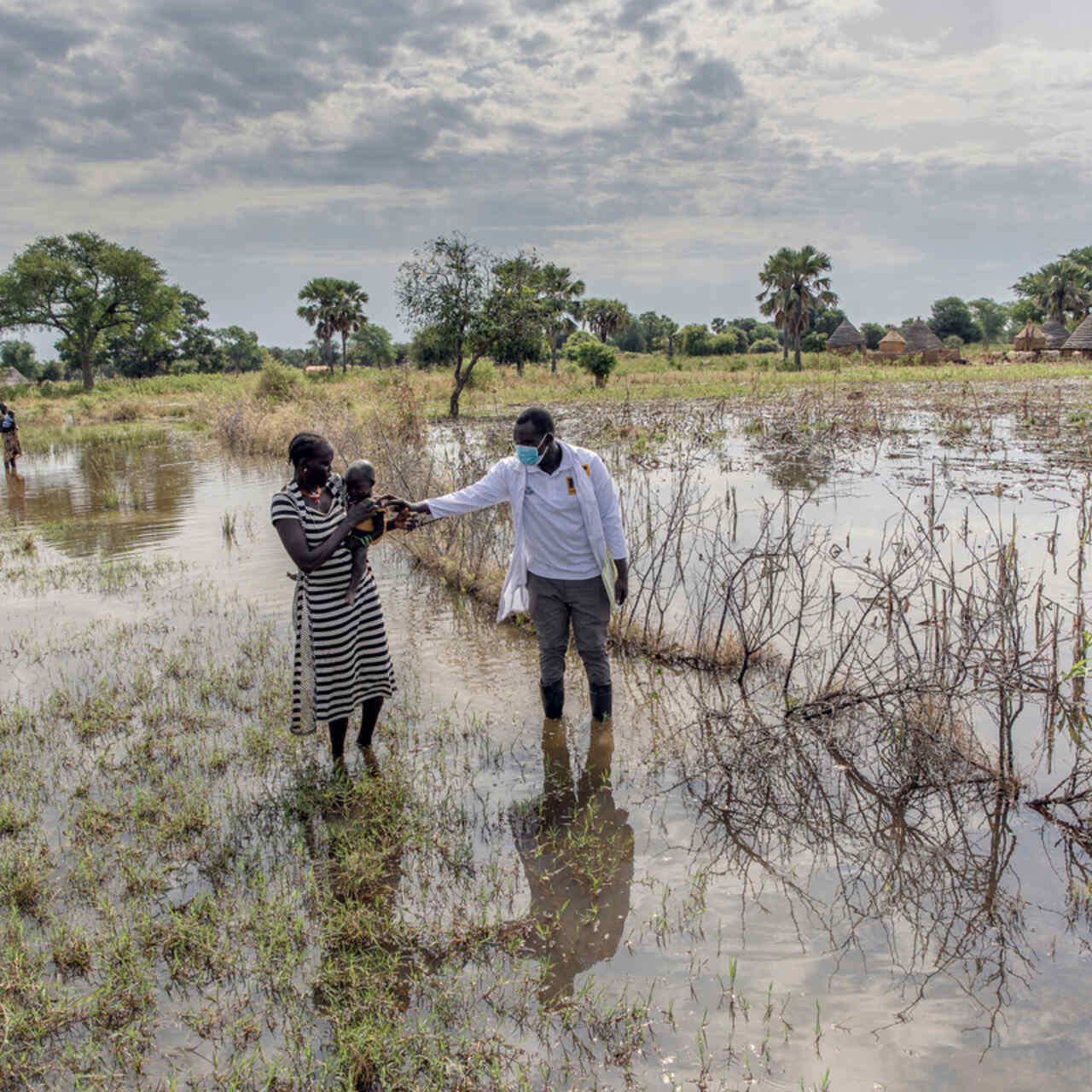
As a result of climate change, floods are becoming more frequent and intense, posing an immediate physical threat to those affected.
Beyond their initial impact, floods have far-reaching consequences such as undermining food security, damaging infrastructure and displacing millions of people from their homes.
The devastating impacts of floods are long-lasting and affect vulnerable communities the most. In the last decade, communities with low levels of climate resilience (meaning, the ability of a system, community, or region to withstand the impacts of climate change) had 15 times higher mortality rates due to floods, droughts and storms.
The IRC has responded to several flood–related humanitarian crises, including in Libya, Afghanistan, Nigeria and Bangladesh. Around the world, we work to develop climate resilience in communities and support survivors in rebuilding their livelihoods.
Below, find out more about the impacts of floods and what the IRC is doing to help communities prepare for and recover.
Editors Note: One year since devastating floods hit Libya, the IRC and other NGOs are highlighting the urgent need for continued interventions and long-term recovery support for affected communities. Read our statement.
What is flooding?
Floods occur when water overflows or soaks land that is normally dry. They are the most common type of weather-related disaster and have caused more fatalities in the U.S. than tornadoes, hurricanes or lightning. Climate change is accelerating the severity and intensity of flooding worldwide.
Flash flooding occurs when an area receives an excessive amount of rain in a short period of time. Due to parched and hardened soil, drought-stricken regions are often unable to absorb water and are particularly susceptible to this type of flooding. Flash floods can be extremely dangerous and often strike with little warning.
In August 2024, more than 5.5 million people were affected by severe flooding across Bangladesh. At least 23 people lost their lives in the devastating floods that affected 11 districts across the country, with critical infrastructure, including power lines, roads, and communications also destroyed
Floods can cause catastrophic damage irrespective of location. To reduce the effects of flooding, governments may introduce flood control infrastructure like dams, seawalls or levees to prevent water from overflowing from streams, rivers and coastal shorelines. These projects aim to increase a community's climate resilience.
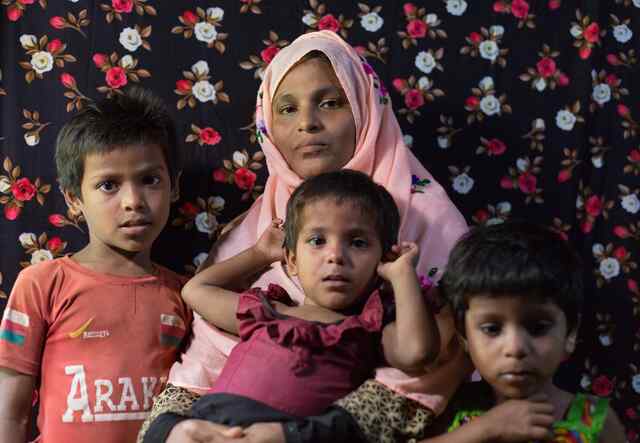
How does flooding impact vulnerable communities?
Protecting a community from the dangers of flooding can be a challenge for vulnerable populations, which can result in inadequate preparation. Communities without access to flood control infrastructure or those dealing with armed conflict or poverty are at a greater risk of flooding compared to wealthier communities.
Many of the countries that have made minimal contributions to the causes of climate change are disproportionately enduring its effects.
Floods displace families
Flooding can destroy entire communities, displacing millions of families and forcing them to leave with only what they can carry.
People who have been displaced by climate crises often require urgent humanitarian support. Displaced families are faced with numerous uncertainties and struggle to access shelter, food, clean water, health services and education. Additionally, widespread displacement also worsens economic hardships and intensifies humanitarian needs.
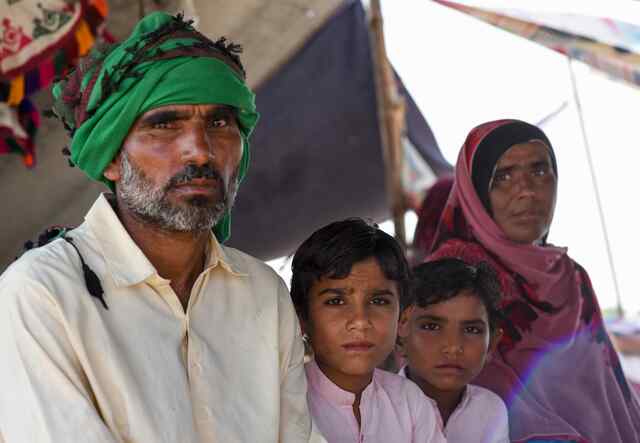
Floods impact food security and livelihoods
Floods have a strong impact on regions where agriculture and herding are vital for livelihoods and nutrition. When floods destroy agricultural fields and drown livestock, communities are left without adequate food resources and a devastated economy.
““The frequent occurrence of flooding [in Nigeria] is unprecedented; it now happens annually, and the impact on communities is severe,” says Babtunde Anthony Onjei, the IRC country director for Nigeria. “We are deeply concerned about the long-term impact of this disaster on vulnerable populations.”
These dynamics in Nigeria are often seen in other contexts devastated by floods. Other countries, such as Pakistan, El Salvador, and the United States, have also experienced floods that have devastated agricultural economies over the years.
The situation is particularly dire for vulnerable populations, including women and children. In Mali’s capital Bamako, widows or women with children who rely on small businesses that have been destroyed are among the most affected. Many of these women live in makeshift shelters that could not withstand the floods.
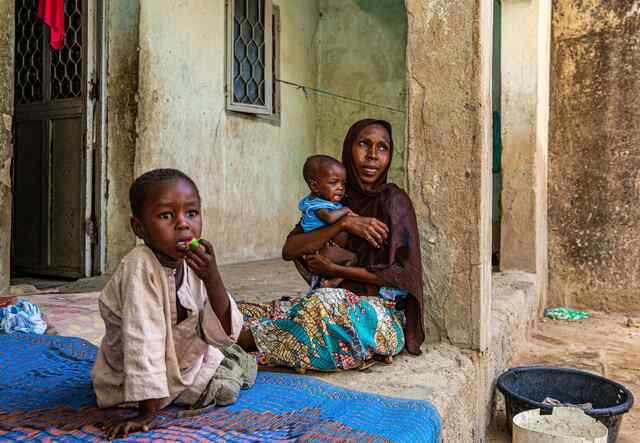
Floods create barriers to clean water and sanitation
Floods can destroy critical pieces of public infrastructure and cause lasting health concerns in affected communities. Flood water can carry sewage and waste into nearby bodies of water, contaminating safe water sources such as streams, lakes and rivers. Inadequate access to proper hygiene increases the risk of water-borne and food-borne diseases spreading within communities.
For women like Nehar Begum, a lack of safe water disrupts health and menstruation. After experiencing flooding in Rangabali, Bangladesh, Nehar and other women in her community walk for miles to collect safe drinking water. They also have to rely on non-potable water from a nearby canal for basic household tasks such as bathing and dishwashing. Due to a lack of safe water, many women in Nehar’s community have begun using birth control medication to stop their menstrual cycles.
How does the IRC respond to floods?
The IRC has ninety years of experience in supporting crisis-affected communities. We help build climate resilience in flood-prone communities and help flood survivors recover and rebuild their livelihoods.
Improving climate resilience
Climate resilience is the ability to anticipate and prepare for climate shocks, like flooding. The IRC can mitigate the humanitarian impact of floods by helping communities implement preventative measures.
There are a number of ways to improve climate resilience. The implementation of flood warning systems can help a community evacuate in time, while the construction of levees can reduce the risk of rivers or streams overflowing into nearby areas. Giving cash to vulnerable groups in communities at risk of flooding is another important tool in improving climate resilience.
“Receiving cash assistance ahead of a flood empowers people to protect their lives and livelihoods, which improves their food security, economic situation, and overall climate resilience,” explains Clare Clingain, a senior IRC research coordinator who led a 2023 study in Nigeria which found that cash assistance can positively increase climate resilience in flood-prone communities.
Helping to cope, recover and rebuild
Not all humanitarian crises are the same. That’s why the IRC - through access, readiness, expertise, and working in partnership with our clients - supports accounting for and planning around the unique needs of the communities we serve in our emergency responses.
“After a disaster strikes, the IRC conducts a needs assessment to determine what support affected communities need and how we can effectively deliver it,” says Kiryn Lanning, senior director of the IRC’s emergency unit.
“Whether it be through the establishment of safe spaces and shelters, food assistance or providing cash directly to survivors so that they can decide how to best meet their needs, the IRC has a toolbox of programs that can be used to support people in crisis.”
Throughout our emergency responses, the IRC emphasizes the safety and empowerment of vulnerable groups like women and children, who are most impacted during times of crisis. The IRC is also committed to supporting the long-term recovery of crisis-affected people and works to provide access to education, livelihood opportunities and health services.
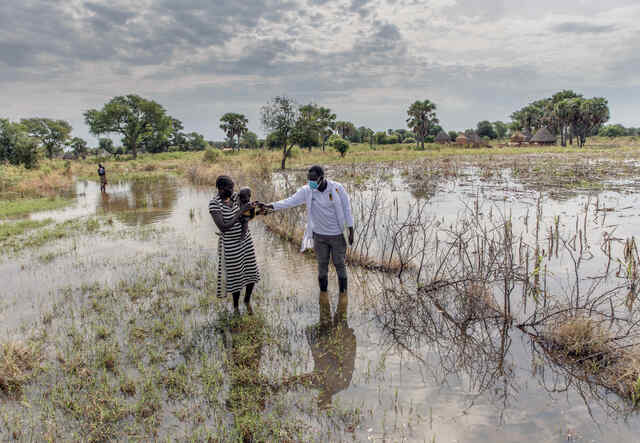
How did the IRC respond to flooding in Mali, Niger and Nigeria?
The IRC warns that unprecedented floods are wreaking havoc in Niger, Mali, and Nigeria. In Niger, over 841,000 people have been affected, with more than 400,000 displaced and numerous lives lost. Mali is experiencing its worst floods since the 1960s, impacting 343,900 people and resulting in 55 deaths. In Nigeria, heavy rainfall has caused widespread devastation, impacting locations including Adawama, Borno, Sokoto, Yobe and Zamfara where the IRC operates; over 1.7m people have been impacted by the flooding across the country.
The overflowing of the Alau Dam in Maiduguri (Borno State) has led to the worst floods in 30 years, affecting more than 1 million people, with many lives lost and injuries reported, though the exact toll remains unconfirmed. The IRC is working with partners and government agencies to ensure that those in need reach safety and receive emergency support, including cash, shelter, and access to clean water and sanitation, especially for the most vulnerable.
Floods are exacerbating food insecurity in the Central Sahel of West Africa by damaging farmland and causing significant crop losses, particularly affecting low-income communities as temperatures rise faster than the global average. The IRC calls for urgent proactive measures like early-warning systems to mitigate the impact of climate events, along with international investment in climate mitigation, resilient infrastructure, and strengthened health systems.
The IRC highlights the need for a shift in climate financing to prioritize these vulnerable groups and build resilient communities. This includes scaling up community-based disaster risk reduction efforts and investing in infrastructure capable of withstanding extreme weather events.
How did the IRC respond to flooding in Libya?
On September 10, 2023, 23, Libya was hit by Storm Daniel, bringing about severe weather conditions characterized by intense winds and sudden heavy rainfall. This climatic event led to massive flooding, claiming the lives of thousands of individuals.
The aftermath has seen approximately 44,000 people internally displaced, seeking refuge mainly with relatives or within educational and public facilities. Essential services, including health, sanitation, electricity, and housing, were severely disrupted, further compounding the hardships thousands of families faced.
The IRC was among the early responders to the crisis and supported people with health and protection services and psychological first-aid. But one year later, humanitarian needs remain high. The humanitarian response is transitioning from emergency relief towards recovery and reconstruction, with a focus on addressing residual needs and building long-term resilience for affected communities.
“The impact of Storm Daniel continues to reverberate through the communities in Libya,” says Jared Rowell, IRC’s Country Director in Libya. “Our efforts to provide medical care and rebuild essential health services have been critical, but, needs remain for strengthened healthcare and comprehensive mental health services to ensure a resilient recovery.”
Learn more about the flooding in Libya and what you can do to help.
How did the IRC respond to flooding in Pakistan?
In 2022, intense flooding devastated Pakistan, causing approximately 10 million acres of land to be flooded. This resulted in over 1,700 deaths and an estimated $30 billion in damages to property across the country.
The IRC was one of the first organizations to respond to the crisis. Within days, the IRC began, reaching over 1.4 million people, providing them with emergency assistance such as medical services, food supplies, basic household items, and hygiene and dignity kits that contained items like soap and toothbrushes.
Now, the IRC is building and repairing schools, establishing child-friendly safe spaces where children can recover from the trauma they have endured, supporting safe water and sanitation projects, and providing primary and reproductive healthcare services in remote areas of the country. We are also empowering the people of Pakistan through cash assistance and job creation and training programs.
With additional flooding expected in 2023, the IRC is warning that 9.1 million people could fall into poverty and become solely reliant on humanitarian aid due to flood impacts.
“The last year has been especially hard on the people of Sindh and Balochistan, where flood waters destroyed about 10 million acres of agricultural land that provided an income for millions of people,” explains IRC Pakistan director Shabnam Baloch. “People are going hungry, and malnutrition continues to be a critical concern despite the best efforts of humanitarian organizations.”
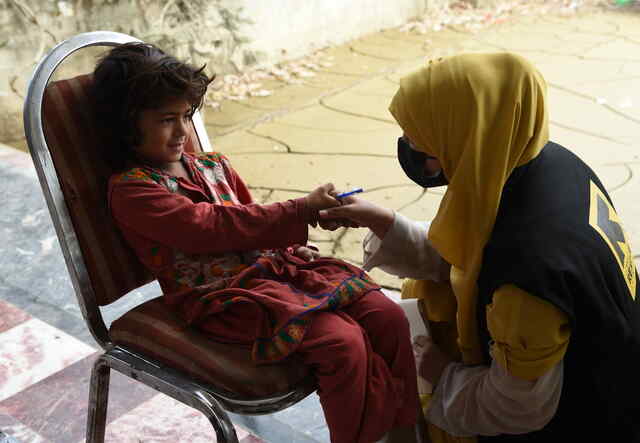
How can I help after a flood?
Several steps need to be taken to help a flood-affected community recover and rebuild. Consider taking some of the steps below to help communities in need.
Support local communities impacted by floods
- Volunteer: If you are near a flood-affected community, volunteer your time and skills to assist in the cleanup, once it is safe to do so.
- Provide shelter: Offer temporary shelter to members of flood-affected communities, or pet sit for a flood-affected family.
- Stay informed: Keep yourself updated with information from official sources and share accurate information with your community.
- Financial assistance: Donate in-kind aid, like clothing or canned food, or contribute to an organization that provides humanitarian support to affected communities.
*Pseudonym used for privacy
